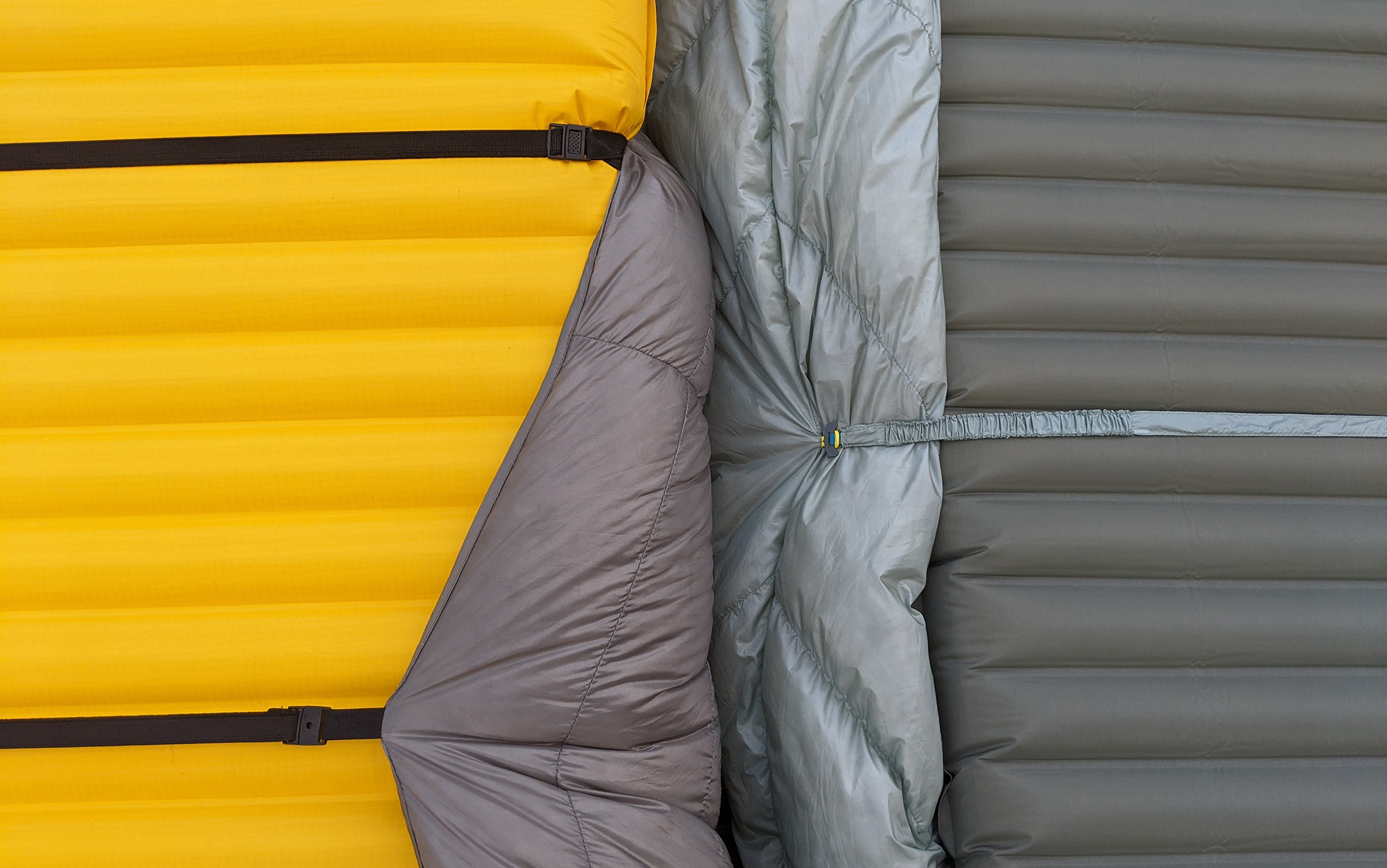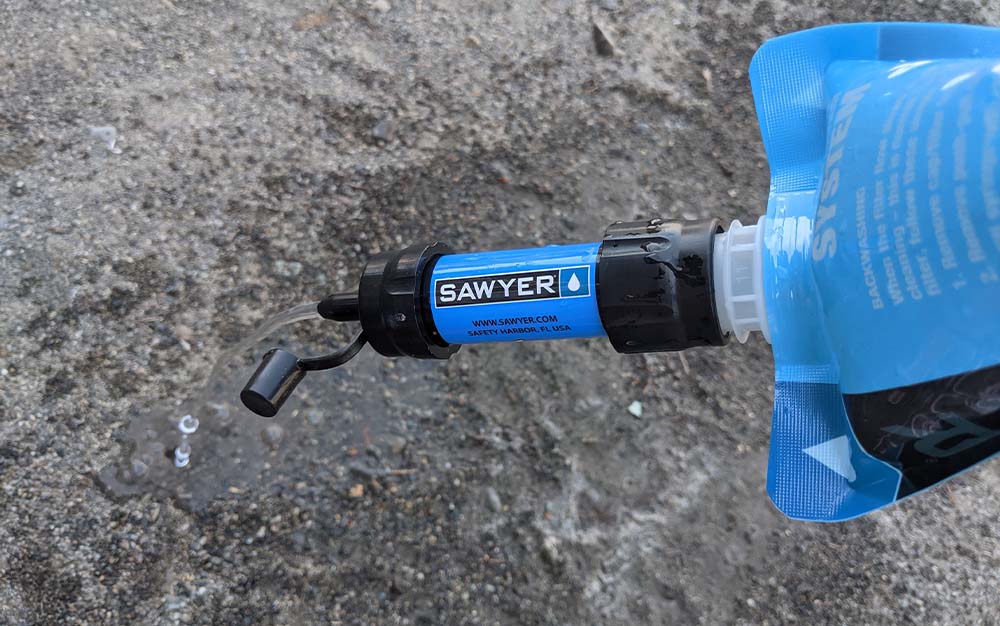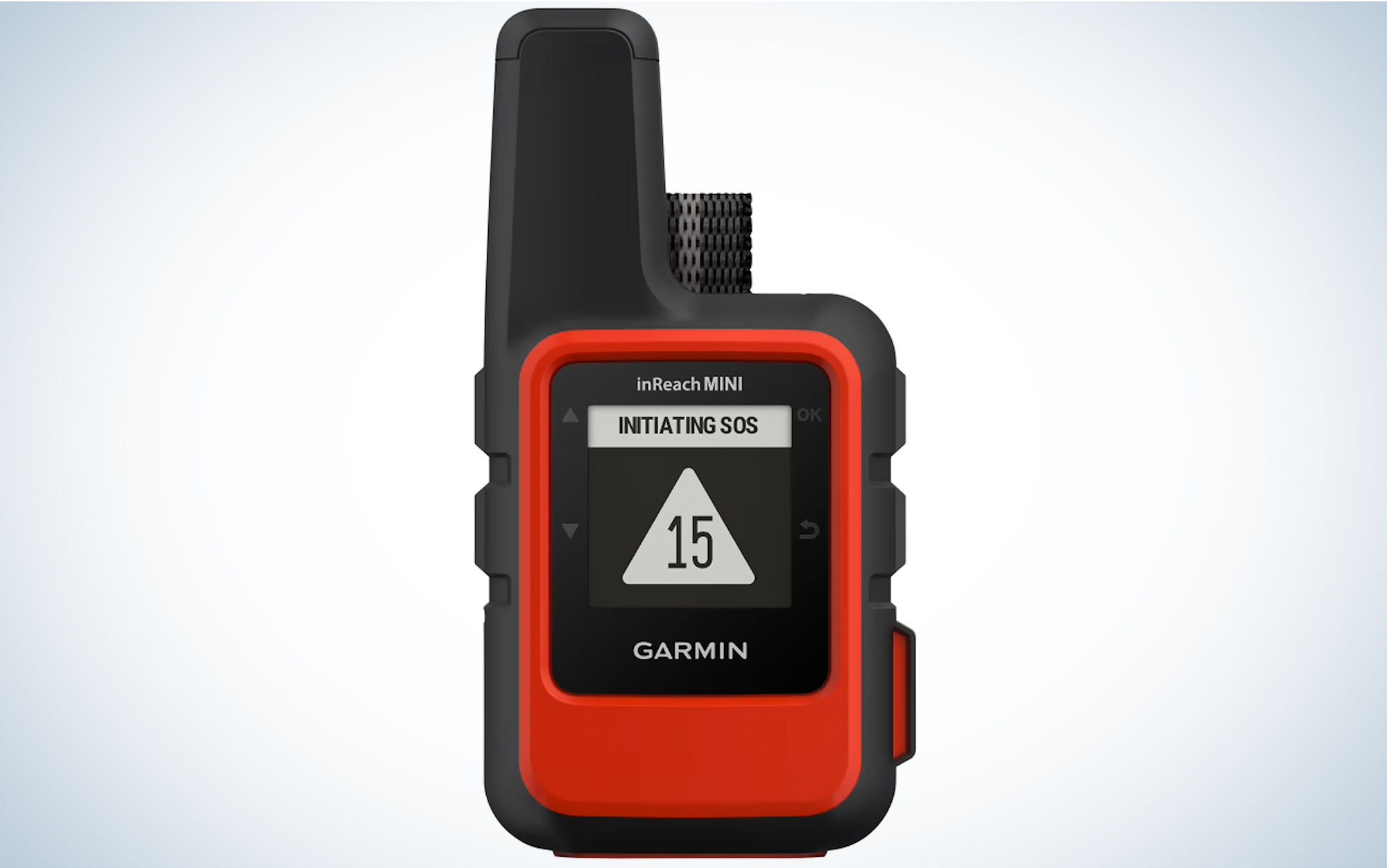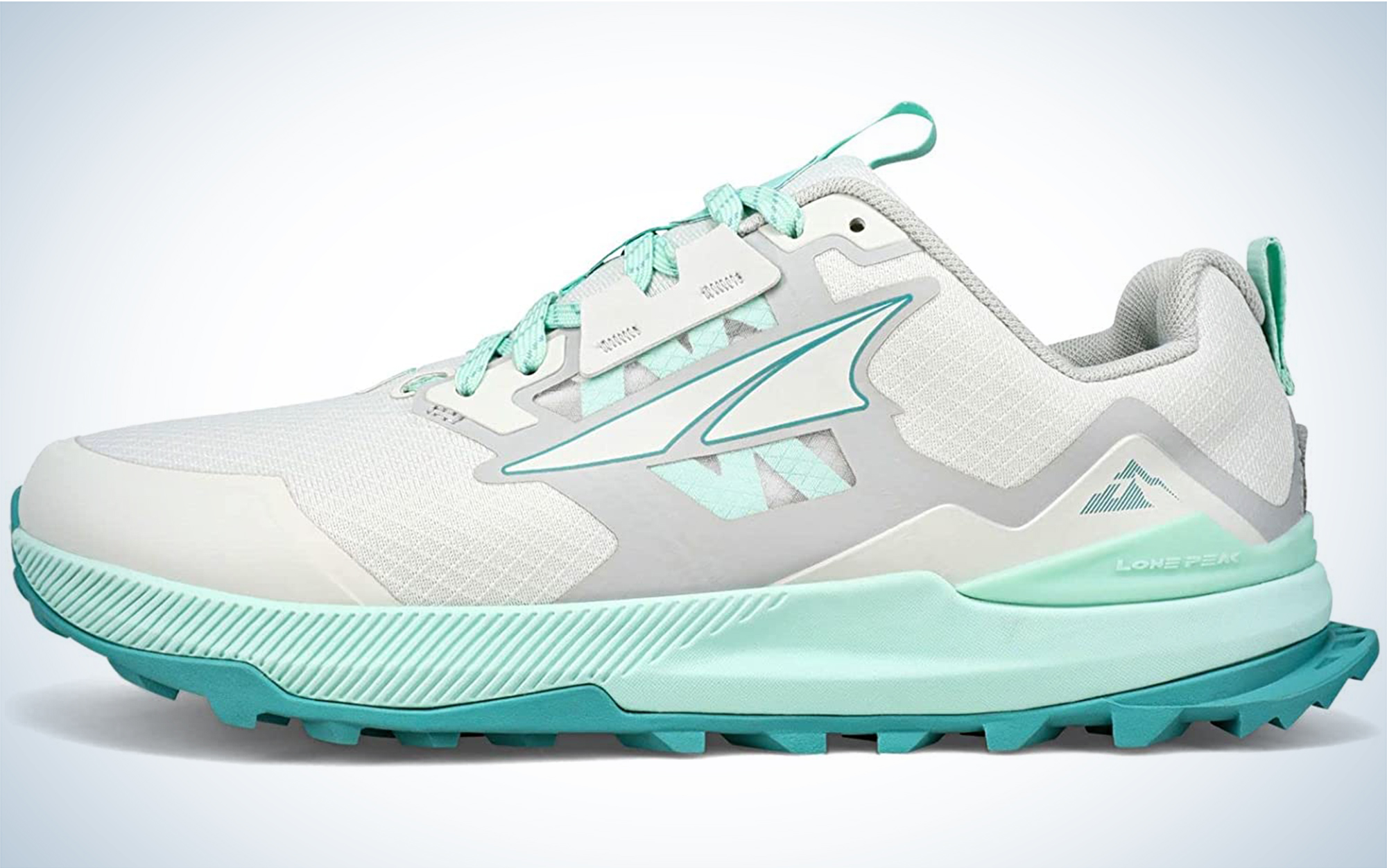We may earn revenue from the products available on this page and participate in affiliate programs. Learn More ›
Published Mar 20, 2023 6:00 PM
Whether you’re in the middle of your first thru-hike or planning out next season’s adventures, upgrading to ultralight backpacking gear is a smart investment. The more grams you shed, the farther you’ll be able to travel day-to-day and the better experience you’ll have. To help you choose the best ultralight backpacking gear for your kit, we’ve rounded up our top picks from side-by-side tests conducted in the field.
How We Tested Ultralight Backpacking Gear
The Outdoor Life team has conducted numerous side-by-side tests of the top-ranked backpacking gear, from the best backpacking water filters to the best trail runners to the best backpacking quilts. The gear on this list were the top performing lightweight or ultralight picks from those tests. If we’re recommending it, we’re confident that it will work well across any terrain that backpackers travel in.
Best Ultralight Backpacking Gear: Reviews and Recommendations
Best Quilt: Therm-a-Rest Vesper
Key Features
- Temperature Ratings: 45 degree, 32 degree, and 20 degree
- Size: Fits up to 6 foot individual (regular), 6 feet 4 inches (long)
- Weight: 12 ounce (45 degree, regular), 15 ounces (32 degrees, regular), 19 ounce (20 degree, regular)
- Fill: 900fp Nikwax hydrophobic goose down
- Fill Weight: 6 ounces (45 degrees), 8.5 ounces (32 degree), 12.5 ounces (20 degree)
- Material: 10D ripstop nylon (DWR on shell fabric only)
- Three attached, non-adjustable, elastic underpad straps
- Drawstring at neck with snap-button closure
Pros
- Lightweight
- Wide design helps prevent drafts
Cons
- Unusually narrow footbox
- Straps were not as secure around the bottom of the pad as others I looked at
- No additional customization options beyond what is available online
If you’re considering switching to a quilt for weight savings, then you should look seriously at the Therm-a-Rest Vesper. At 15 ounces for a 72-inch quilt rated for 32-degree temps, it is the lightest quilt that I looked at by several ounces. And, impressively, it’s not achieving that by scrimping on width (58 inches at the shoulders). I came to appreciate just how wide the Vesper is after an unfortunate night when my three-year-old decided that her sleeping bag was garbage and she was going to share this quilt with me instead. I didn’t sleep well that night, but the quilt had no trouble covering both of us.

The Therm-a-Rest Vesper has a somewhat unusual strategy for preventing drafts. Whereas the others used adjustable straps—so that you can cinch down the edges of your quilt to the edge of your sleeping pad, the Vesper has loose-fitting, non-adjustable straps with a bit of bungee in them that—and this is an important detail—attach a few inches above the side seam on either side. This creates a buffer for restless sleepers: the loose straps and wide profile let you toss and turn, the bungee pulls the quilt back into place, and the extra material below the strap prevents a draft from getting in. This doesn’t look or feel like it should be able to keep out drafts, but it does. (See above about sharing this quilt with a toddler.)
My only real gripe about this quilt is the footbox, which is exceedingly narrow. It feels odd to have all this room to toss and turn in, getting into as comfortable a position as you can while backpacking, and then have this super narrow footbox to slide your foot into. This goes double if your preference is to tuck the footbox of this quilt into your Therm-a-Rest NeoAir, which renders it almost unusable.
Best Backpacking Sleeping Pad: Therm-a-Rest Uberlite
Key Features
- Size Range: S (20 inches x 47 inches) to L (25 inches x 77 inches)
- Weight: 8.8 ounces
- Height: 2.5 inches
- R Rating: 2.3
- Fabric: 15D nylon
Pros
- Extremely lightweight
- Comfortable
Cons
- Expensive
- Lower R rating is not suitable for shoulder season or alpine adventures
- More fragile than heavier sleeping pads
This backpacking sleeping pad is so light, and so tiny, you’ll barely notice it’s in your pack during the day. But at night, it’s just as comfortable as the standard Therm-a-Rest XLite, my pick for the best backpacking sleeping pad overall. There are two catches here—the first is that this has about half the R rating of the XLite, similar to top-performing closed-cell foam pads. It’s suitable for summer camping (and early fall if you run hot), but you’ll be compromising the performance of the rest of your sleep system if you take it into colder conditions than that. (For shoulder season, we recommend the Therm-a-Rest XLite and for winter, the Therm-a-Rest Xtherm.)
The second is that this sleeping pad is fundamentally more fragile than other backpacking sleeping pads. Instead of a 30-denier ripstop nylon, it only uses 15-denier nylon for the shell. If you’re used to getting away with only a cursory kick of the largest rocks before throwing your sleeping on the ground, you’re going to need to take more care (some kind of groundsheet beneath it is a must).
Best Water Filter: Sawyer Squeeze Mini
Key Features
- Effective against protozoa and bacteria
- Weight: 2 ounces (initial); 2.9 ounces (after testing)
- Time to Filter a Liter of Water: 1:10 (initial); 1:50 (after testing)
Pros
- Lightest filter in my test
- Least expensive filter in my test
- Smallest filter in my test
Cons
- Took twice as long to filter a liter of water as some of the other top picks
The mini-me version of the Sawyer Squeeze is the perfect filter for UL enthusiasts—small enough that it won’t take up much real estate in your backpacking backpack and light enough (even after the final weigh-in) that you can scrub an ounce or more off your spreadsheet. Even better, it’s so affordable that it wouldn’t hurt your budget much to just replace it each season. Where it wobbles, unsurprisingly, is in water flow taking about twice as long as the standard Sawyer Squeeze to filter a liter of water. Of course, if you plan to attach the filter directly to a SmartWater bottle and suck the water out from there, that might not matter much to you.

I used the provided dirty bag during testing and was impressed with its durability. Even after squeezing the bag as hard as I could to push the water out over ten rounds of filling and filtering to reach the desired five liters, the bag still looked like new. I only wish that it was larger—the bag that comes with the mini is 16 ounces rather than the standard liter. Something else I noticed during testing was that the filter itself did not appear to screw onto the bag correctly. Each time I tried to fix it, the angle would still be lopsided. Fortunately, there were no leaks during testing so this appears to be mainly an aesthetic concern.
While the flow rate for the Sawyer Mini was not especially impressive (about four times as long as the Katadyn BeFree), I did appreciate that it came with a lightweight syringe to backflush the filter when it starts to clog too much.
While this filter was middle of the pack at the end of the testing of the best backpacking water filters, it was both the lightest and the least expensive.
Best Utensil: GSI Pouch Spoon
Key Features
- Weight: 0.5 ounces
- Length: 8.75 inches
- Materials: Acetal
Pros
- Lightweight
- Budget friendly
- One of the most durable utensils I tested
- Long enough to use with dehydrated pouch meals
Cons
- Literally just a plastic spoon
You know who you are, you backpackers (likely thru-hikers) that have been singing the praises of the disposable spoon scrounged from that last roadside gas station after you lost your titanium one somewhere in the Sierras. And I get it—I’ve done it too—but here’s the thing: That’s supposed to be a stop gap when you lose your spoon, not your new UL hiker trash gear plan.
This is the spoon you want. It’s dirt cheap, surprisingly durable, and springs right back into place no matter how far I try to bend it. It’s even pretty long—definitely longer than that piece of white plastic. Even better, it’s BPA, BPS, and BPF free, so there won’t be as many chemicals leaching into your body with each bite.
My minimalist pick for the best camping utensils is also affordable and durable, long enough to reach into the far corners of your favorite freeze-dried meal bags.
Best Satellite Messenger: Garmin inReach Mini 2
Key Features
- Weight: 3.5 ounces
- Satellite Network: Iridium
- Battery: Up to 14 days
Pros
- Has satellite messenger ability
- Pair with your phone using the Garmin Messenger app
Cons
- Breadcrumb map only
- Expensive
Tyler Freel took a look at the Garmin inReach Mini 2 and came back impressed with how the unit had improved over the original model. He noted that the inReach MINI 2 works best when paired with your smartphone via the Garmin Explore app, especially for more complete GPS functions and mapping, including the ability to download a variety of map layers including Topo North America, USGS Quad Sheets, and even aerial imagery for some areas. (He did find that the MINI 2 was easier to use without a mobile device than the MINI.) What the MINI 2 lacks is the option to have a basic topographic map on the unit, even with the small screen: you won’t have access to the full power and function of the MINI 2 without using it with a smartphone.

But here’s what you really care about, the weight: At only 3.5 ounces, you’d be hard-pressed to find a satellite messenger or personal locator beacon that’s as lightweight as this one, let alone pack in this many features. Don’t chance things, ultralighters, be sure to pack this one for your next big hike.
Best Trowel: TheTentLab The Deuce #2
Key Features
- Both ends are functional
- Two etched teeth on either side
- Durable, yet lightweight, aluminum
- Lanyard or carbineer hole
- Recyclable
- 0.6 ounces
- 6.8 inches
Pros
- Lightweight
- Cuts into the ground with ease
- Dual sided
Cons
TheTentLab The Deuce #2 is a favorite among my thru-hiker testers. The minimal weight of 0.6 ounces makes this a no-brainer carry for those who want to travel light. Made of tough 7075-T6 aluminum, the handle end is meant to pry up rocks and cut into the ground to create a hole. Then flip it and use the larger rounded shovel end to lift up the dirt in the hole. If you encounter tough ground, the Deuce has two etched teeth on either side. These are made to last a lifetime, but if you don’t want it anymore, it is 100 percent recyclable. Designed and made in Colorado. —Justin La Vigne
TheTentLab The Deuce #2 was the lightest pick in our roundup of the best camping shovels.
Best Rain Jacket: Montbell Versalite
Key Features
- Sizes: Men’s S-XL; women’s S-XL
- Price: $250
- Weight: 5.7 ounces
- Material: GORE-TEX Infinium Windstopper
- Pit Zips: Yes
- Pockets: Two zip pockets at waist
Pros
- Very lightweight
- Reasonably water resistant and wind resistant
- Has pit zips
Cons
- Not suitable for extreme conditions
Let’s get the tough part out of the way first: If you are headed into conditions that could be described as “torrential,” you should probably leave this one in your closet. But if you’re looking at more typical rain conditions—the light rain of the Pacific Northwest or short-but-intense squalls of the East Coast—then the Montbell Versalite is an excellent choice. It was completely dry underneath after an hour in the shower, and the underside of the fabric was only ever so slightly damp after twenty-four hours of having a pool of water sit on top of it—an impressive degree of water resistance.
This wasn’t quite the lightest rain jacket in my test (those would be the Frogg Toggs UltraLite), but the extra features it incorporated (accounting for that extra ounce of weight) upped its performance for big adventures. The biggest of these is the zipped pit vents, essential for letting you cool off and air out when the sweat starts to pick up. It also has (albeit more minimal than the Arc’teryx Beta LT) velcro cuffs and cinches at the hem, the back of the hood, and the neck, which will help keep out cold gusts when the wind kicks up.
The Montbell Versalite had the best balance of functionality and weight in our test of the best backpacking rain jackets.
Best Puffer Pants: Montbell Light Down Pants
Key Features
- Available Sizes: Men’s S-XXL; women’s S-XL
- Weight: 7.1 ounces
- Fill Power: 850fp
- Fill Weight: 3 ounces
- Shell Material: 10D ripstop nylon
Pros
- Lightweight but durable
- Small packed size
- Slim profile layers well under shell pants
Cons
- Run small
- Not warm enough for winter conditions
At 7.1 ounces, the Montbell Light Down Pants are the perfect fit for early-season backpackers and alpine adventurers. I’ve carried earlier versions of the Montbell Light Down Pants everywhere, from the High Sierras to the North Cascades, and never once regretted the extra weight in my pack. The three ounces of 800 fill power down is enough to keep you warm in 30-degree temps in the evening (or 20-degree temps if you’re on the go), while still compressing down to about the size of a pair of socks in your bag when not in use.
While I looked at a pair of the newest model of the Montbell Light Down Pants for this story, I have a pair in my gear closet that I’ve had for close to a decade—it’s picked up exactly one tiny rip in that time, attesting to these puffers’ overall durability.
Best Puffer Jacket: Crazy Levity
Key Features
- Sizes: Men’s S-XL; women’s XS-L
- Weight: 6.1 ounces (men’s); 5.4 ounces (women’s)
- Fill: 1000fp RDS-certified down
- Shell and Lining: 7D nylon with DWR treatment
- Hooded only
Pros
- The lightest hooded puffer jacket I’ve ever tried
- Warm enough for winter activities
Cons
- Extremely expensive
- Missing some standard features
Too often, the lightest weight puffer jackets aren’t warm enough for truly cold conditions: the so-called midlayer puffer jacket. Some even dispense with the hood in an effort to showcase their UL bonafides. To get the warmth they need, most shoulder season, alpine, and winter adventurers have to settle for something significantly heavier.
The Crazy Levity jacket aims to change that. At 6.1 ounces, the men’s version is over two ounces lighter than the popular Mountain Hardwear Ghost Whisperer 2 and, in my experience, packs in notably more warmth. It got there by pulling out all the stops: the highest grade fill power down, only one zipped pocket, no cinch cords—even the baffling is noticeably minimalist, as the Crazy Levity uses glue instead of sewing its (very minimal) cells. And they get away with it in part because there is just so much fill in this coat that it doesn’t have much chance to shift around.
You’re probably wondering if there’s a catch, and it’s this: this is an extremely expensive piece of gear, costing almost twice what the Ghost Whisperer costs.
Read our full Crazy Levity review to learn more.
Best Trail Runner: Altra Lone Peak
Key Features
- Weight: Men’s: 21 ounces, Women’s: 17.4 ounces
- Stack Height: 25mm
- Heel-to-Toe Drop: none
- Lug Height: 6mm
- MaxTrax outsole
- Available in regular and wide
Pros
- Wide toe box increases stability
- Substantial lugs for improved traction
Cons
- Rock plate can inhibit ground feel
- Heel doesn’t lock in as securely
The Altra Lone Peaks combine the best features of responsive trail running shoes with the serious bona fides of a true hiking shoe. This shoe is a great choice for everything from long distances to day hikes to trail runs. It starts with a zero drop in the stack height (meaning there’s no height difference between the front of the shoe and the back of the shoe), which promotes striking on the midfoot. Yet, they still provide enough cushion for committed heel strikers. The Lone Peak 6s also have an unusually wide toe box that allows your toes to splay as you hike, improving ground feel and promoting stability.
To protect the foot from sharp rocks and other trail hazards, the midsole is equipped with comfortable cushioning and a solid rock plate. One OL staff member was impressed by the substantial lugs on the Lone Peak 6, which performed well on a steep pass covered with wet leaves, “I felt in control even in the moments I slowed down out of caution,” they said.
Read our full Altra Lone Peak Review to learn more.
Best Sock: Darn Tough Hiker Micro Crew Midweight Hiking Sock
Key Features
- Materials: 61 percent merino wool, 36 percent nylon, 3 percent Lycra spandex
- Cushion Level: Medium
- Height: Low calf
Pros
- Lifetime warranty
- Durable enough for a thru-hike
- Wicks moisture well in all conditions
Cons
- Might feel scratchy to people with sensitive skin
I’ve hiked thousands of miles in Darn Tough’s hiking socks, across deserts, rocky trails, and snowy mountain passes, and they’re still my number one go to. Darn Tough’s hiking sock has been the standard bearer for hiking socks for years, and they are still at the top of my list. The balance of merino wool—which both retains heat and wicks away moisture—with nylon’s durability, keeps my feet hot-spot free and comfortable on day hikes and thru-hikes alike. Since wool contains lanolin, a natural antimicrobial, the stink factor stays down on trips where even creekside rinses aren’t an option. The Lycra spandex provides just enough stretchiness to keep these socks from slipping down on high-mileage days.

I’ve worn these socks everywhere from the San Juans of Colorado to the Mojave in California to the temperate rainforest of Olympic National Park, and it performs equally well in all conditions. And when they did eventually blow a hole in the back heel after a thousand miles or so of use, Darn Tough’s Lifetime Warranty means you’re always covered.
Ultralighters might be tempted to grab a thinner pair, especially if they are carrying more than one spare pair of socks in their pack: don’t. Your feet are the vehicle for your journey; they deserve the best.
Read Next: Best Backpacking Socks
What to Consider Before Buying the Best Ultralight Backpacking Gear
Functionality
While weight is obviously an important consideration when choosing ultralight backpacking gear, it’s not the most important one: that would be functionality. Make sure your gear can do the job it needs to do before trekking deep into the backcountry with it.
Durability
It’s not uncommon for ultralight backpacking gear to get that way by compromising the overall durability. Be sure to balance the wear and tear you’ll likely be putting on your gear (both for your current and future trips) with your desired base weight.
Price
While some ultralight backpacking gear is relatively inexpensive, more often than not it’s fairly pricey, especially when you start to get into the weeds of high fill power quilts and puffer jackets, thin titanium pots, or dyneema tents and backpacks. If you’re on a strict budget for backpacking gear, look at the pros and cons of each item before adding it to your cart.
FAQs
Q: Is ultralight backpacking gear worth it?
If you’re planning high mileage days in the backcountry, then ultralight backpacking gear is absolutely worth it. However, more casual backpackers will likely be happier with lightweight or even traditional gear, which tends to be comfortable in camp. If you’re not sure which one you are, consider whether you consider the destination the goal of your trip, or the hike itself. Those that are focused on the hike itself over the destination will likely appreciate the upgrade to ultralight backpacking gear.
Q: What is a good baseweight for ultralight backpacking?
Ultralight backpackers typically have a baseweight (all of your gear, minus food, water, and fuel) of under ten pounds, although this can vary some for larger individuals (who will necessarily carry more weight in the form of larger sleeping bags, etc.). Achieving a sub-ten pound baseweight is not easy, and means looking at every single piece of gear in your arsenal. If you’re trying to transition from a more traditional backpacking style, consider starting first with the goal of a lightweight kit, or under twenty pounds.
Q: What size pack for ultralight backpacking?
While most ultralight backpackers aim for a 35L pack, the size that’s right for you will depend on the length of your trip and the conditions you are likely to encounter. If you expect to be more than seven days between food sources you should plan to add 10L to your intended pack size. Same goes if you’re looking at water carries over twenty-five miles.
Why Trust Outdoor Life?
Since 1898, OL has been a leading authority in testing and reviewing hunting gear, fishing tackle, guns and shooting equipment, and much more. We have more than a century-long history of evaluating products, and we’re now bringing that expertise to online reviews. Our editors are experienced outdoorsmen and women, and most importantly, we’re trained journalists. We prioritize field testing and objective data when reviewing products. We conduct interviews with gear manufacturers and engineers as well as outdoor experts so that our readers have an understanding of how and why a product works—or doesn’t.
Advertising does not influence our gear reviews and it never will. While we always focus our coverage on standout products—because we want our readers to be aware of the latest and greatest gear—we also cover the flaws and quirks of any given product.
Final Thoughts
Choosing the right ultralight backpacking gear is an individual decision that must take into account both your preferences and the terrain and weather you expect to encounter. At the end of the day, ultralight backpacking is about optimizing your backcountry experience, not simply cutting weight for the sake of cutting weight.










